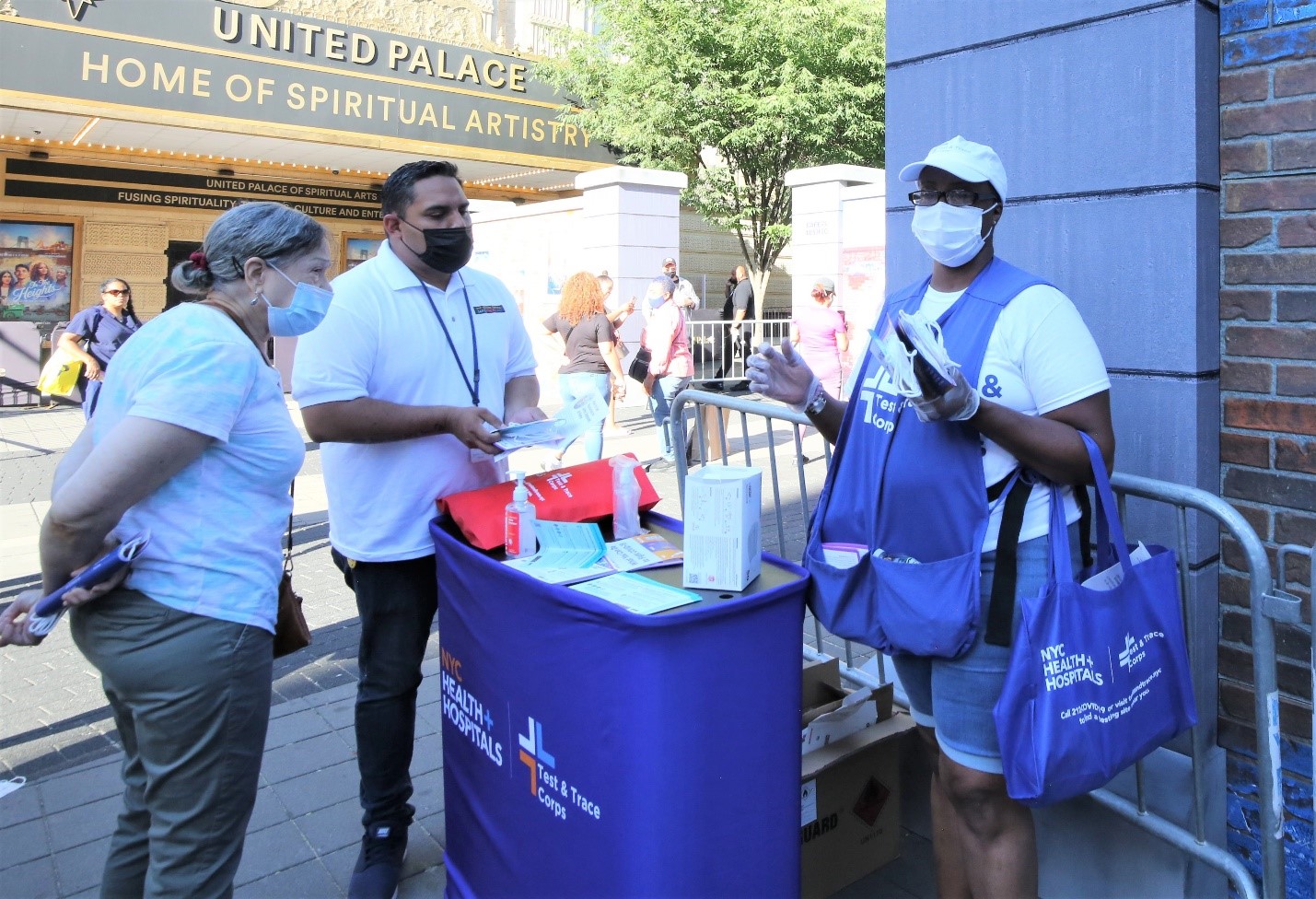When an individual finds out they are infected with SARS-CoV-2, the virus that causes COVID-19, time is of the essence. Contact tracing begins when someone who has tested positive shares the names of those they have been in close contact with. Being able to obtain these contacts and notify them of their exposure as soon as possible is imperative to reducing the spread of COVID-19. Contact tracing is therefore most effective when done quickly.
Contact tracing
When someone tests positive for COVID, their lab results are reported to the NYC Health Department. This information is processed and sent to NYC Health + Hospitals’ Test & Trace Corps, specifically to the Trace program. The first step in contact tracing is intake, in which a tracer gathers pertinent information from a client, including symptoms, time of symptom onset and, most importantly, the names of anyone who is a close contact. A close contact is defined as someone with whom the client has spent more than ten minutes while being less than six feet away.
Armed with this list, Trace will then conduct intakes with all of the close contacts, notifying them that they have been exposed to someone with COVID-19 (no names are given), and that testing and quarantine are recommended. New York City’s contact tracers also offer both contacts and those who have COVID a wide array of resources to assist them in getting whatever they need to quarantine or isolate safely. The NYC Test & Trace Corps provides everything from food and medicine delivery to free hotel rooms for those who need them.
All information gathered from NYC Test & Trace Corps clients is confidential, and contacts are never told who exposed them to the virus.
Accelerated contact tracing
The majority of contact tracing in New York City takes place over the phone. But there is a team of tracers who do in-person work, which includes something known as “accelerated contact tracing,” or ACT. ACT literally speeds up the process of contact tracing by starting it on the same day someone tests positive for the virus — ideally as soon as they receive their positive test results. The Trace program’s community engagement specialists (CES) conduct ACT at sites with rapid COVID tests, including “pop-up” sites and mobile testing units.
These testing sites are deployed to neighborhoods hardest hit by the pandemic and are able to change locations when COVID case numbers, and therefore the need for testing, increases. When Test & Trace created these roaming sites, an opportunity arose that had not existed before: in-person, on-the-spot contact tracing. The Community Engagement Team, Trace’s workforce of in-person tracers whose job it is to visit hard-to-reach clients at their homes, was a natural fit for this assignment. ACT is now done on-site at AdvantageCare clinics and all 70 of the City’s pop-up and mobile testing sites, and since August of 2020 the initiative has conducted intake with more than 68,000 New Yorkers.
By enabling contact tracers to connect with those who test positive right after they get their test results, ACT reduces the time between COVID-19 diagnosis and the initiation of isolation (in the case of the person with COVID) and quarantine (in the case of close contacts), thereby stopping the spread of transmission sooner. For close contacts, ACT expedites the notification process, and helps to facilitate access to testing more quickly so they can be aware of their own status. It also enables tracers to get a head start on providing the resources clients may need so they may take the necessary steps to keep themselves and others as safe as possible.
How it works
Community engagement specialists are stationed at pop-up sites, mobile testing units and AdvantageCare clinics around the city. When a client gets a positive rapid-test result, in addition to sharing the result with the person who took the test, the clinical team informs Trace’s Community Engagement Team. A CES will then do an abbreviated intake with the client in person, focused primarily on collecting their demographic information and their list of close contacts. The records are uploaded to Trace’s system that same night, so clients can begin being monitored the next day. This reduces the time between reporting test results and taking action to contain the spread of the virus.
If someone is no longer at the testing site when their results are received by Trace, ACT can be conducted over the phone. In this situation, the clinical team may call the client to give them their test results and then pass the call on to a CES to begin the case intake.
During intake with someone who is a close contact, a CES will encourage them to get tested as soon as possible and inform them that at-home testing is available citywide.

A Trace community engagement specialist participates in Test & Trace’s outreach efforts in Washington Heights in June 2021.
Photo by Michael Luongo, NYC Test & Trace Corps
Getting ahead of COVID
One thing we have learned during the pandemic is that the sooner you reach someone with COVID-19, the sooner they can isolate and supply their contacts, and the sooner the transmission of the virus can be stopped in its tracks. That is why accelerated contact tracing is so important. Reaching people the same day they test positive — often within minutes of them getting their results — offers Trace a head start in heading COVID-19 off at the pass.